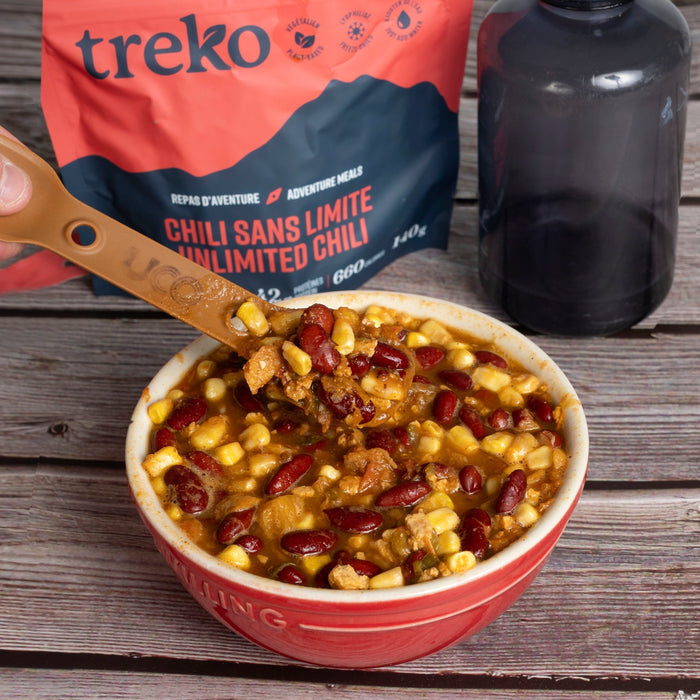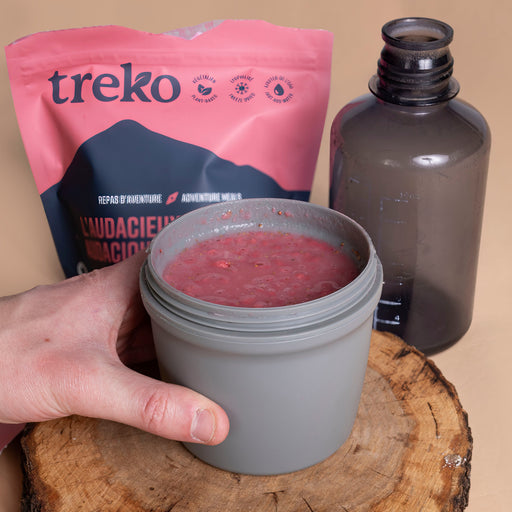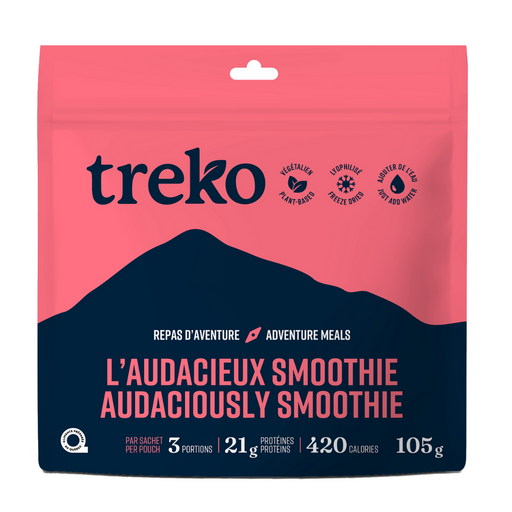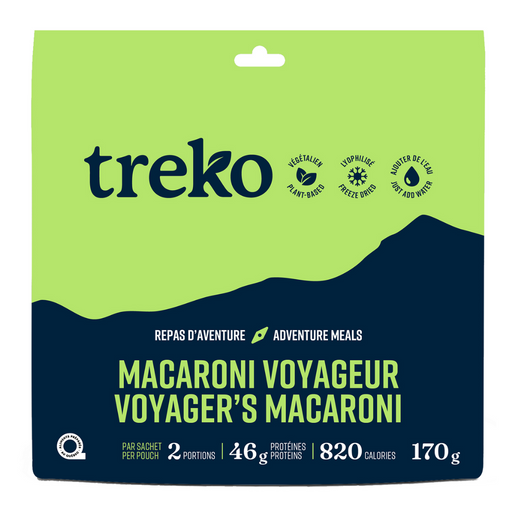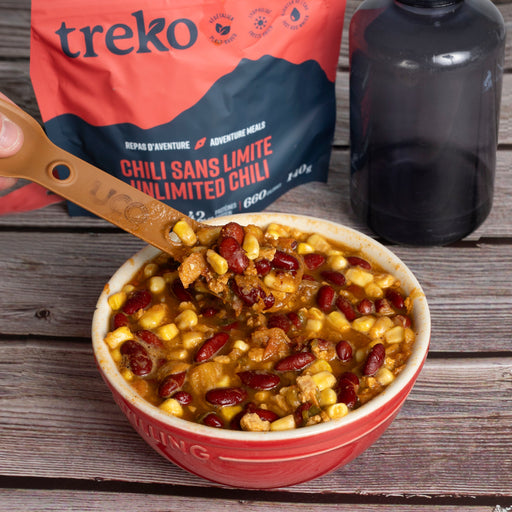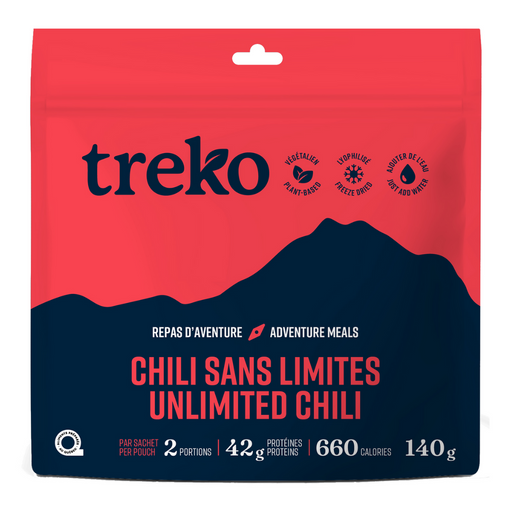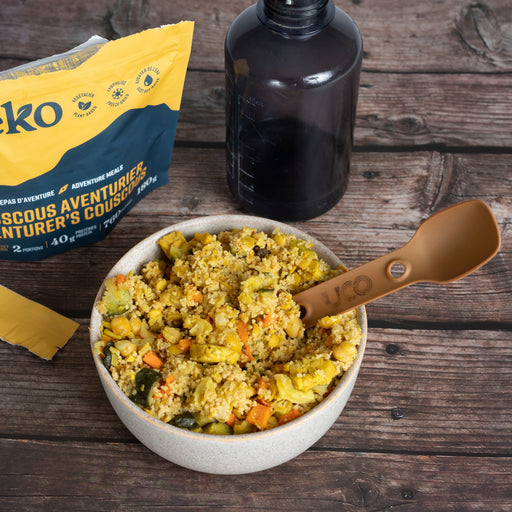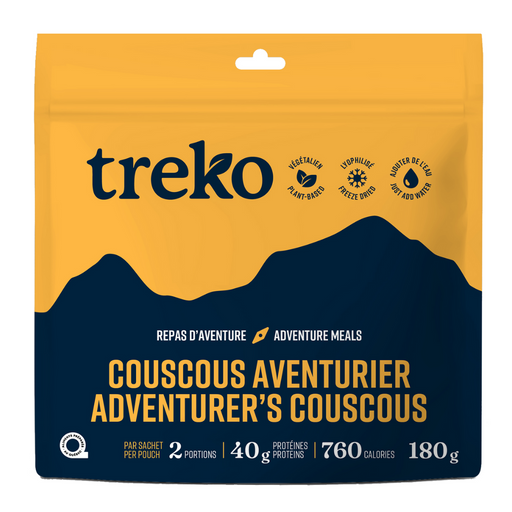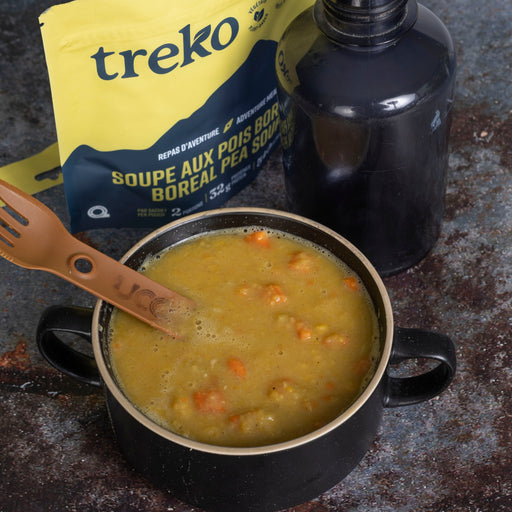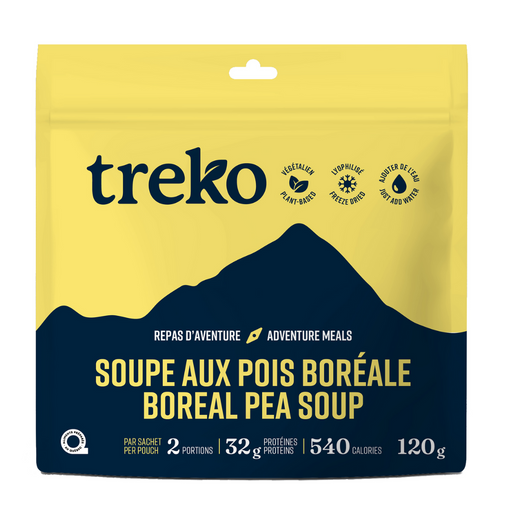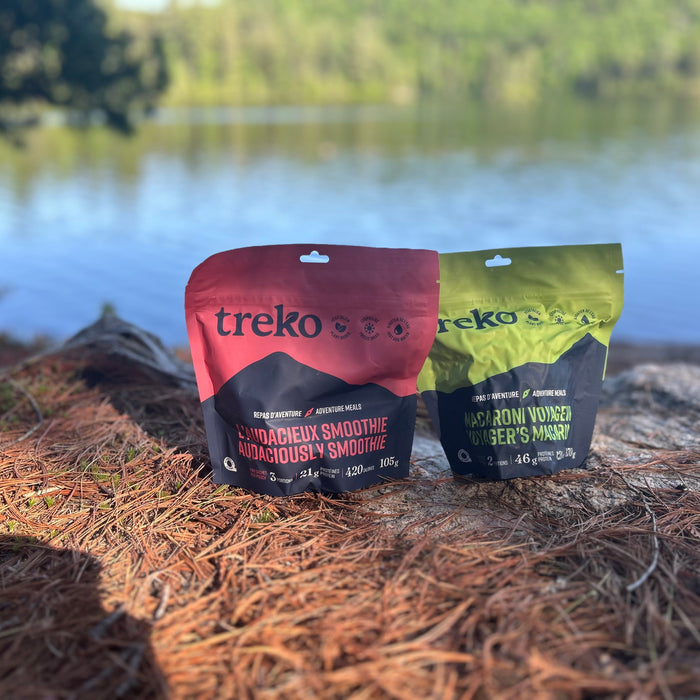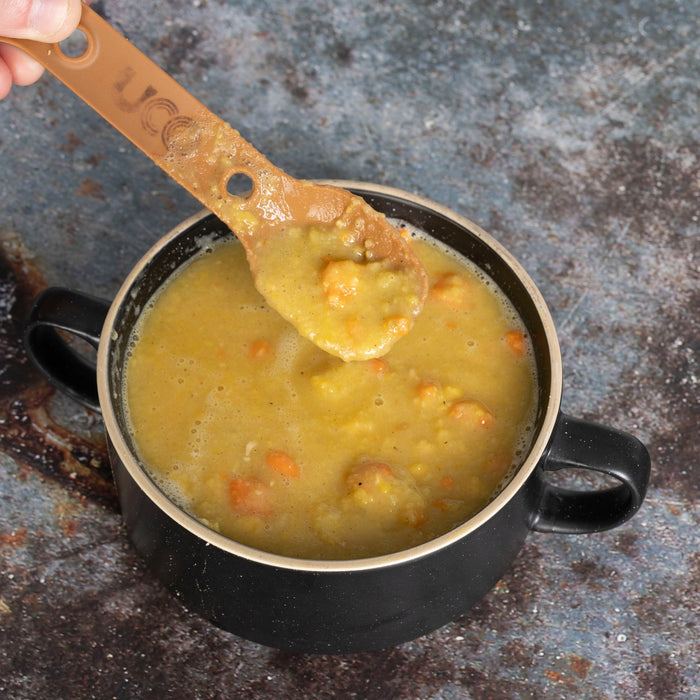Ever opened a food pack after hiking all day only to face a bland meal? Discover the 5 trail-tested meals that actually taste good while giving you the energy you need for your next wilderness adventure.
The Hidden Problem with Most Hiking Meals
Have you ever hiked for hours, finally stopped to eat, and thought: "Is this really the best food option I have?" You're not alone. Many hikers settle for tasteless meals that leave them hungry and low on energy when they need it most.
In Canadian wilderness, where you might hike for days in changing weather, good trail food isn't a luxury—it's essential. The right hiking meals can be the difference between struggling through your adventure and truly enjoying every step.
The truth is, what you eat on the trail affects everything from your mood to your muscle recovery. Too many outdoor enthusiasts focus exclusively on lightweight options without considering nutrition or taste, leading to "hiker hunger" – that constant, gnawing feeling that you're never quite satisfied despite eating regularly.
For weekend warriors and serious backpackers alike, solving the trail food problem creates an immediately better outdoor experience. Let's dive into why your food choices matter so much and discover the six time-tested meal options that consistently deliver both satisfaction and nutrition.
Why Your Trail Food Choice Makes or Breaks Your Hike
When hiking, you burn 3,000-5,000 calories daily. Your body desperately needs:
- Quick energy for immediate power
- Sustained fuel to keep going all day
- Recovery nutrients to repair tired muscles
Research shows proper trail nutrition improves hiking performance by up to 20% and cuts recovery time significantly. This means waking up ready for action instead of feeling drained before you even start!
The nutritional demands of hiking go beyond just calories. During extended activity, your body needs a specific balance of macronutrients:
- Carbohydrates serve as your primary fuel source, especially during high-intensity sections of trail
- Proteins help repair muscles and prevent breakdown during longer trips
- Fats provide sustained energy at a rate of 9 calories per gram – more than twice that of carbs or protein
Your food choices also impact your hydration status. Many hikers focus solely on water intake but forget that proper electrolyte balance is equally important for preventing cramps, headaches, and fatigue.
The psychological component of trail food shouldn't be overlooked either. After a challenging day on the trail, a delicious meal becomes more than fuel—it becomes a reward and a morale booster that can make the difference between enjoying your trip and merely enduring it.
The 6 Proven Hiking Meals That Actually Satisfy
1. Chili: The Ultimate Trail Powerhouse
Chili wins the trail meal championship for good reason. A quality veggie or meat chili delivers exactly what your body craves after climbing mountains all day.
Why hikers love chili:
- One-step preparation — just add water
- Fills you up completely without weighing down your pack
- Works as a base for adding extra ingredients
- Tastes like home cooking even in the wilderness
Our Unlimited Chili powered Caroline Côté to break the women's South Pole speed record! If it works in Antarctica, imagine what it can do on your weekend hike.
The beauty of chili on the trail lies in its versatility. A basic freeze-dried chili can be customized with add-ins depending on your preferences and the length of your trip:
- For shorter trips (1-3 days): Bring a small pouch of shredded cheese, some crushed tortilla chips, or even a tiny container of sour cream to create a gourmet meal
- For longer adventures: Pack small packets of hot sauce, dehydrated vegetables, or seasoning blends to vary the flavor throughout your journey
Nutritionally, chili provides an ideal balance of carbohydrates from beans and vegetables, proteins from beans and/or meat, and enough fats to keep you satisfied. The combination of protein and fiber helps stabilize blood sugar levels, preventing the energy crashes that can make afternoon hiking a struggle.
Trail Chef Tip: Let your chili rehydrate a few minutes longer than the package suggests for the best texture. If you're at higher elevations (above 8,000 feet), add an extra 5-7 minutes to account for the lower boiling point of water.
2. Pasta Dishes: Light Pack, Heavy Nutrition
Pasta meals have become essential for serious hikers. They provide the perfect mix of lightweight packing and high calories that your body needs on long trails.
Top pasta choices for the trail:
- Mac and cheese with added veggies
- Pasta primavera with dried vegetables
- Noodle soups that work as complete meals
Trail fact: Pack 1.5-2 pounds (0.7-0.9 kg) of food per day for proper nutrition. Pasta gives you more energy for less weight. Our Voyager's Macaroni delivers 46g of protein while weighing only 170g before adding water.
The carbohydrate-rich nature of pasta makes it an ideal recovery meal after strenuous hiking days. The body converts these carbs into glycogen, replenishing energy stores depleted during your hike. When these stores run low, you experience that "bonk" or "hitting the wall" feeling that can turn a pleasant hike into a grueling ordeal.
The history of pasta on the trail goes back centuries. Indigenous travelers in what is now Mexico and the southwestern United States carried dried corn masa that could be quickly reconstituted into a simple meal. European explorers brought dried pasta on their expeditions, and by the early 20th century, pasta had become a staple of military rations for its durability and caloric density.
Modern freeze-dried pasta dishes have evolved significantly from these early trail foods. Today's options include:
- Protein-enhanced pasta: Using legume-based noodles or added protein sources to improve recovery
- Vegetable-infused options: Providing essential micronutrients often lacking in trail diets
- Varied sauce bases: From classic tomato to creamy cheese or pesto variations
Trail Chef Tip: For extra creaminess in mac and cheese dishes, let the meal sit closed for 2-3 minutes after initial rehydration, then add a splash of powdered whole milk before stirring again.
Ready for better trail meals? Browse our complete freeze-dried meal collection made specifically for Canadian outdoor adventures.
3. Hearty Soups: Your Cold-Weather Friend
When hiking in cold weather, nothing beats a hot, hearty soup. Beyond warming you up, soups offer unique benefits:
- Hydrates while feeding you
- Easy to digest at high altitudes
- Simple preparation with minimal cleanup
Quebec pea soup has fueled explorers for centuries. Our Boreal Pea Soup keeps this tradition alive in a fully plant-based, trail-ready form.
Soup has a psychological advantage in challenging conditions. Research in environmental psychology suggests that warm foods trigger a response called "thermal contagion" – the sensation of warmth spreads from your core to create a feeling of overall comfort, even when external conditions are harsh.
For serious mountain adventures, soup provides critical hydration that may otherwise be difficult to maintain. Many hikers drink less water in cold weather despite still losing significant moisture through respiration and sweating under layers of clothing. A hot soup helps correct this hydration deficit while providing essential nutrients.
The variety of soup options for the trail is nearly endless:
- Protein-rich options: Lentil, split pea, or bean-based soups provide sustained energy
- Miso-based soups: Deliver probiotics and umami flavor with minimal weight
- Cream-based options: Offer higher calorie counts for intense activity in cold conditions
- Broth-forward varieties: Perfect for morning or evening hydration with added electrolytes
Historical note: Indigenous peoples across North America developed pemmican – a concentrated mixture of dried meat, fat, and sometimes berries – which would be added to hot water to create a nutritious soup that could sustain hunters and travelers through harsh winters. Today's freeze-dried soups build on this tradition with modern preservation techniques.
Trail Chef Tip: For extra heartiness, consider carrying a small container of olive oil to add a tablespoon to your soup. The added fat increases caloric density and creates a more satisfying mouthfeel while providing essential fatty acids.
4. Couscous: Ready Before Your Tent Is Up
When daylight fades and you're racing to set up camp, fast cooking time matters. Couscous is the clear winner:
- Ready in just 5 minutes — faster than any other grain
- Uses 50% less fuel than rice or pasta
- Works with countless flavors from sweet to savory
According to CNOC Outdoors, the fuel savings alone make couscous worth choosing for multi-day hikes.
Our Adventurer's Couscous combines this quick-cooking base with veggies and plant protein for a complete meal ready faster than you can pitch your tent.
What makes couscous uniquely suited to backcountry meals is its unique preparation process. Unlike rice or quinoa, traditional couscous isn't actually boiled—it's steamed. In trail cooking, this translates to simply adding hot water and waiting, which means:
- Less active cooking time so you can set up camp simultaneously
- Reduced fuel consumption extending your stove's capacity on longer trips
- Lower altitude sensitivity compared to foods that require maintaining a specific boiling temperature
The versatility of couscous makes it an excellent canvas for creativity in camping cuisine on the trail. Base variations include:
- Moroccan-style: With dried fruits, nuts, and warm spices
- Mediterranean: Featuring sun-dried tomatoes, olives, and herbs
- Southwest: With beans, corn, and chili spices
- Sweet breakfast option: Using dried fruits, honey, and cinnamon
For ultralight backpackers, couscous offers one of the best weight-to-calorie ratios available. When every ounce matters, a meal that provides approximately 650 calories per 5oz (142g) dry weight represents an efficient fuel source for your body.
Trail Chef Tip: To enhance the texture of couscous meals, add a small amount of olive oil or coconut oil to the hot water before adding the couscous. This prevents clumping and adds valuable calories.
5. Breakfast Boost: Beyond Basic Oatmeal
Every great hike starts with proper fuel. Morning nutrition sets the tone for your entire day on the trail.
Why oatmeal remains the breakfast champion:
- Provides slow-releasing energy that lasts for hours
- Never gets boring thanks to endless flavor options
- Cooks quickly when you're eager to start hiking
Harvard research confirms that oats help maintain steady blood sugar — exactly what you need for consistent energy on difficult trails.
For a fruity morning alternative, our Audaciously Smoothie delivers fast nutrition that powers your start without the cooking time.
The science behind oatmeal's effectiveness on the trail is well-established. The beta-glucan fiber in oats slows digestion, creating a steady release of glucose into your bloodstream rather than the spike-and-crash pattern associated with simple carbohydrates. For hikers, this translates to sustained energy output during the crucial morning hours when most distance is typically covered.
Beyond traditional oatmeal, the breakfast category for hikers, including innovative backpacking meals, has expanded considerably:
- Protein-enhanced options: Adding whey, plant proteins, or nuts to increase satiety
- Ancient grain alternatives: Amaranth, quinoa, or buckwheat for varied nutrition profiles
- No-cook overnight options: Cold-soaked the night before for ultralight trips without stoves
- Freeze-dried smoothie bowls: Combining fruits, oats, and proteins in a quick-prep format
For those who prefer savory breakfasts, options include:
- Freeze-dried scrambles with vegetables and plant-based proteins
- Savory grain bowls with herbs and dried vegetables
- Breakfast burritos using tortillas carried separately
The psychological importance of a satisfying breakfast shouldn't be underestimated. Starting your day with a meal you enjoy creates positive momentum that can help you push through challenging sections of trail later in the day.
Trail Chef Tip: Pre-pack your breakfast oatmeal mix in individual zip-top bags with your chosen mix-ins (nuts, dried fruit, powdered milk, spices, etc.) for grab-and-go morning meals that require zero thought when you're still half asleep.
6. Asian-Inspired Dishes: Flavor Explosion on the Trail
Asian-inspired meals have revolutionized trail food with their bold flavors and perfect balance of nutrients. These dishes bring much-needed variety to multi-day treks when "food fatigue" threatens to set in.
What makes Asian-inspired meals ideal for the backcountry:
- Balanced macronutrients with carbs from noodles or rice, protein from various sources, and healthy fats
- Complex flavor profiles with sweet, salty, sour, spicy, and umami notes
- Excellent rehydration properties, particularly with rice noodle-based dishes
- Satisfying texture combinations from soft noodles to crunchy vegetables
Popular trail-friendly Asian dishes include:
- Thai-inspired noodles with peanut sauce
- Rice noodle dishes with vegetables and protein
- Coconut curry varieties with vegetables
- Teriyaki or sesame noodle bowls
The flavor-forward nature of these meals makes them particularly valuable on longer trips. After several days on the trail, taste fatigue becomes a real issue as appetite naturally diminishes due to exertion. The bold, distinct flavors in Asian-inspired dishes help stimulate appetite when other meals might seem unappealing.
From a nutritional standpoint, these meals excel at providing complex carbohydrates paired with adequate protein. Many traditional Asian recipes also incorporate a variety of vegetables, helping hikers maintain micronutrient intake that might otherwise be lacking in a trail diet.
The historical roots of these dishes make them naturally suited to travel. Many Asian noodle dishes were developed as street food or food for travelers, designed to be prepared quickly with minimal equipment - principles perfectly aligned with backcountry cooking needs.
Trail Chef Tip: Pack a small container of sesame oil and a few packets of soy sauce to enhance the authentic flavor of Asian-inspired trail meals. A few drops go a long way in transforming even the simplest noodle dish into a gourmet trail experience.

The Perfect Trail Food Formula
The best backpacking food balances four essential factors:
- Maximum calories, minimum weight
- Simple preparation with minimal gear
- Simple preparation with minimal gear
- Complete nutrition with balanced nutrients
- Actually tastes good so you look forward to meals
Beyond the six classics above, consider adding:
- Freeze-dried fruits for vitamins
- Nuts and seeds for healthy fats
- Dark chocolate for quick energy boosts
Understanding the specific needs of your body on the trail helps you customize this formula for personal optimization. Factors to consider include:
- Your metabolic rate: Larger individuals, those with more muscle mass, and younger hikers typically require more calories
- Trip intensity: A relaxed nature walk demands far fewer calories than an aggressive summit push
- Environmental conditions: Cold weather hiking increases caloric needs by 10-15% for thermoregulation
- Trip duration: Longer trips may require more attention to micronutrient balance
- Personal preferences: The best trail food plan is one you'll actually follow and enjoy
When calculating your caloric needs, a useful baseline is:
- Lightweight hiking (flat terrain, light pack): 21-25 calories per pound of body weight per day
- Moderate hiking (some elevation, medium pack): 25-30 calories per pound per day
- Strenuous hiking (significant elevation, heavy pack): 30-35+ calories per pound per day
This means a 150-pound person on a challenging backcountry trip might need 4,500-5,000 calories daily – more than twice the typical sedentary requirement.
The Canadian Trail Food Advantage
Hiking in Canada presents unique challenges. Our wilderness ranges from rainy coastal forests to snowy mountains to buggy northern tundra. Your food must work everywhere.
Trail meals made in Canada like ours are specially designed to:
- Work perfectly in extreme temperatures
- Provide enough calories for challenging terrain
- Use local, sustainable ingredients that respect our environment
Canadian wilderness adventures demand specialized nutrition considerations that many international food brands don't address. For example:
- Northern latitudes mean longer daylight hours in summer, often resulting in longer hiking days and increased caloric needs
- Temperature extremes can range from -40°C in winter to +35°C in summer, affecting both food preparation and storage
- Remote trails often mean longer periods between resupply points, requiring food with optimal shelf-stability
- Diverse ecosystems from coastal rainforests to alpine environments to boreal forests create varied trail conditions
Our understanding of these unique Canadian environments informs every aspect of our meal development process. We test our meals in real Canadian wilderness conditions, from the humid forests of Quebec to the exposed ridgelines of the Rocky Mountains.
Traditional indigenous knowledge about local plants and survival foods has influenced modern Canadian trail food development. Many indigenous communities across Canada developed preservation techniques for local ingredients that allowed for long-term storage and transportation – early versions of today's trail food innovations.
Canadian-made trail foods also support local agricultural systems and reduce transportation carbon footprints compared to imported alternatives. When we source ingredients locally, we're supporting Canadian farmers while creating a more sustainable product.

Smart Packing and Preparation Tips
Getting the most from your trail meals requires thoughtful preparation and packing strategies. Here are some trail-tested approaches to optimize your food experience:
- Pre-sort meals by day: Package each day's worth of food in a separate bag, making it easy to grab without digging through your entire food supply
- Remove excess packaging: Transfer freeze-dried meals to zip-top bags with the instructions written in waterproof marker to save space
- Carry a dedicated eating vessel: A long-handled spoon reaches the bottom of food bags, and an insulated mug keeps meals warm longer
- Pack strategic spices: Small amounts of salt, pepper, hot sauce, or olive oil dramatically improve trail meals
- Plan consistent fuel: Eat at regular intervals rather than waiting until you're starving
For longer trips, consider these advanced techniques:
- Stagger meal types to avoid food fatigue
- Include variety in textures as well as flavors
- Position day's snacks accessibly in outer pockets
- Use calorie-dense foods for high-altitude sections
The Freeze-Drying Advantage
Understanding the technology behind your trail meals helps you appreciate why freeze-dried options excel in outdoor conditions. Freeze-drying (lyophilization) is a sophisticated preservation method that offers several critical advantages over traditional dehydration:
- Better nutrient retention: The low-temperature process preserves up to 97% of the original food's nutritional value
- Superior texture upon rehydration: Foods return more closely to their original texture and consistency
- Faster rehydration time: The porous structure created during the freeze-drying process allows water to penetrate more quickly
- Longer shelf life: Properly stored freeze-dried foods can remain viable for 25+ years
- Lighter weight: Freeze-drying removes up to 98% of the original water content
The freeze-drying process works by:
- Flash-freezing prepared foods at extremely low temperatures
- Placing them in a vacuum chamber where ice transitions directly from solid to vapor (sublimation)
- Applying precise amounts of heat to accelerate the process without melting the ice
- Sealing the finished product in moisture-proof packaging
This process creates microscopic pores in the food structure where water molecules once existed. When you add hot water on the trail, it rapidly fills these spaces, returning the food to something remarkably close to its original state.
For hikers, this means getting meals that taste nearly homemade with minimal weight penalty – a significant upgrade from the pasty, flavor-diminished foods common with basic dehydration methods.
Advanced Trail Meal Strategies
Once you've mastered the basics of trail food planning, consider these advanced strategies to further optimize your nutrition and enjoyment:
Caloric Density Mapping
Rather than carrying the same caloric density for your entire trip, match food energy to your itinerary:
- Higher-calorie meals for days with major elevation gains or difficult terrain
- Recovery-focused nutrition (higher protein) following particularly strenuous sections
- Simpler, lighter meals for easy days when your body's demands are lower
Strategic Supplementation
Even the best trail meals might miss certain micronutrients over extended trips. Consider packing:
- Powdered greens: Mix into breakfast or dinner for phytonutrients
- Electrolyte tablets: Critical for hot weather or high-exertion days
- Vitamin D: Particularly important for heavily forested or cloudy environment hikes
- Omega-3 supplements: Support joint health during repetitive motion activities
Food Psychology Tactics
Mental fatigue from food monotony is a real concern on longer trips. Combat this with:
- Surprise treats: Small, unexpected food rewards boost morale tremendously
- Texture contrasts: Pack crunchy elements to add to creamy meals
- Meal progression: Gradually increase meal quality over the trip, saving best for last
- Cultural theme days: Group meals by cuisine type for psychologically satisfying variety
Upgrade Your Trail Menu Today
The difference between merely surviving and truly thriving on your hike often comes down to food. When every ounce in your pack matters, your meals should deliver maximum energy and enjoyment for minimal weight.
Ready to transform your trail eating? Start here:
- Get our free Hiking Checklist to plan exactly how much food you need
- Share your go-to trail meal in the comments — we might feature it in our next product!
Happy trails and happy eating!
